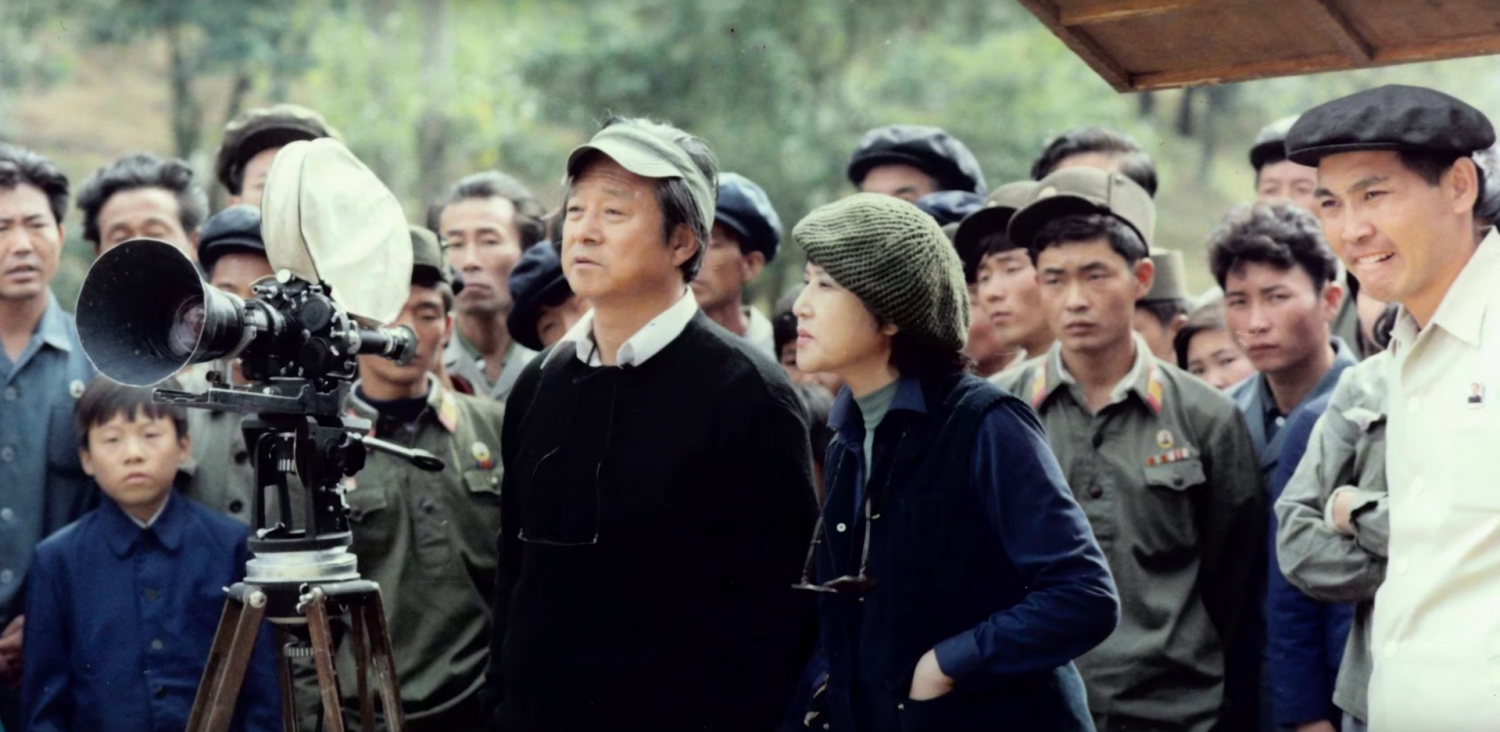South Korean actress Choi Eun-hee and director Shin Sang-ok leapt out of their taxi in Austria and sprinted toward the U.S. Embassy.
Eun-hee said she felt as if she was running in slow motion.
“If we got caught, they’d cut off our heads,” she said.
Eun-hee and Sang-ok were fleeing from North Korean dictator Kim Jong-il, who had kidnapped them years earlier and kept them in his grip, forcing the pair to produce films for him.
The Lovers and the Despot, a documentary that will release Friday, tells their story.
The film begins with scenes from North Korea, such as thousands of people waving red flags in union, which, from afar, looks like a sea of krill swarming to and fro.
Jong-il stood stone-faced watching the sea of flags. At some point, he asked his advisor: Who is the best director in the South? The answer was Sang-ok.
What makes the kidnapping more interesting is how it instigated the reunion of two ex-lovers: Eun-hee and Sang-ok, who had been married but separated in a dramatic family upheaval of infidelity. Their two adopted children helped tell their story.
The cornerstone of the story is the collection of tapes Eun-hee hid in her purse one-by-one, to record the interactions she and Sang-ok had with the dictator, which adds a bone-chilling aspect to the film.
The documentary effectively combines those tapes with photographs, interviews with a variety of sources and scenes from Sang-ok’s films to visually narrate what is happening in the jarring documentary.
One memorable moment is when Sang-ok manages to escape a concentration camp he is confined in. He jumps on a moving train, hoping to ride it away. Unfortunately for him, the train goes in circles and he is recaptured. As the viewer hears this story, they watch a clip in which a man jumps on a speeding train.
Unfortunately, the documentary leaves a few holes in the narrative. For example, Eun-hee describes the tapes she used, but it is unclear where she was able to obtain so many of them. It seems as though the couple was being closely watched and that leaves the audience to question how she was able to successfully buy and smuggle tapes into her living quarters.
The documentary strays from journalism and toward entertainment when it does not question the story. This is not to say it is unbelievable, but the film only briefly mentions at the end that there are skeptics. It also does not say why or what the reasoning of the skeptics is.
This works for a commercial audience, of course, because it promotes the entertainment value of the story. But the role of a journalist is to be skeptical.
Furthermore, it would have been interesting to hear more about the extreme Stockholm syndrome Sang-ok exhibited, at one time saying in reference to Jong-il: “The man loves me and does everything he can for me. So I can’t possibly betray him.”
Ultimately, though, it’s a gripping account of two people who made 17 films in more than 27 months for the dictator of North Korea. That, after all, is no small feat.



